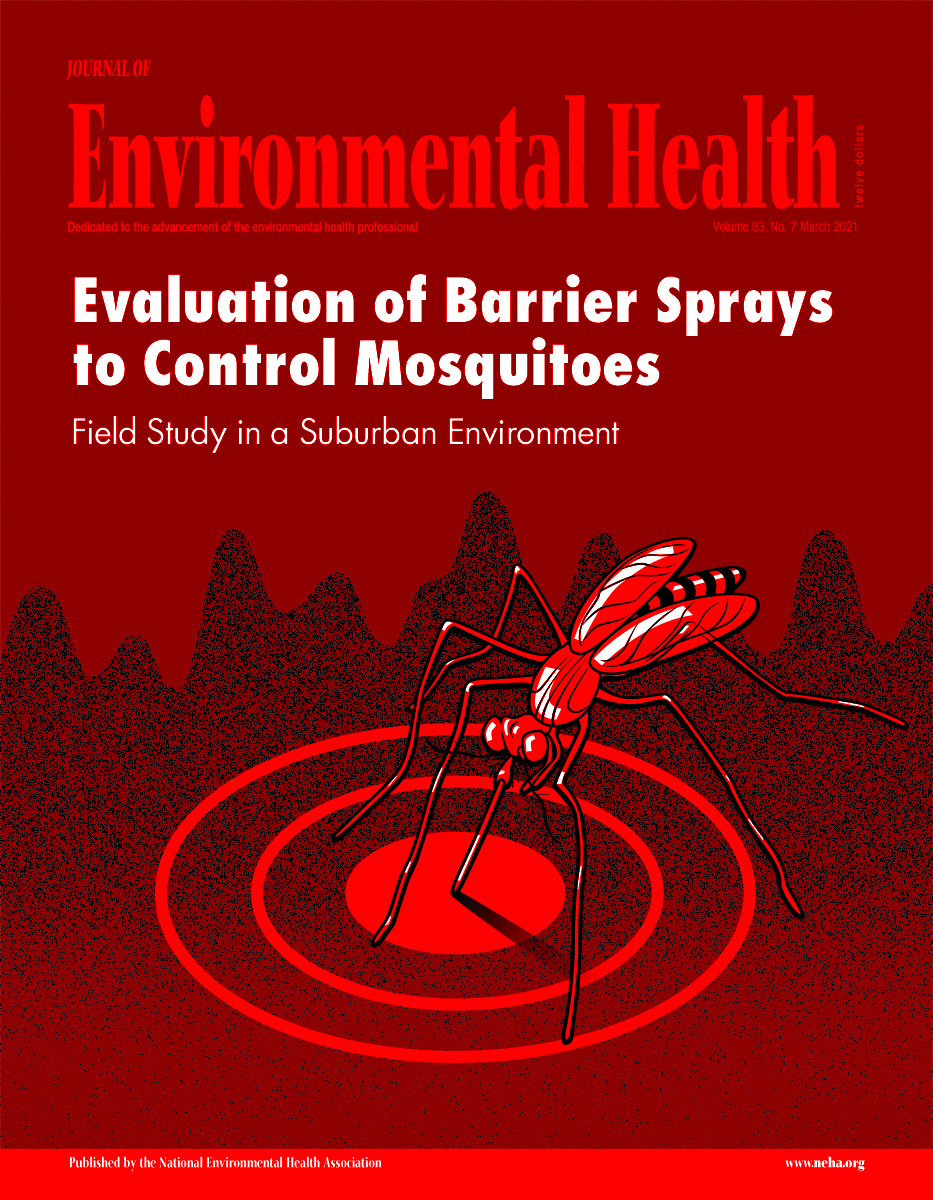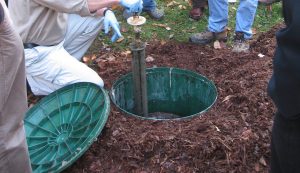Richards SL, Rhyne MN*, Bunn JP* and White AV* (2021). Evaluation of Barrier Sprays Containing a Pyrethroid and an Insect Growth Regulator to Control Aedes albopictus in a Suburban Environment in North Carolina. Journal of Environmental Health 83(7): 8-17.
Abstract
Barrier sprays are a common method for controlling a variety of diurnal and crepuscular mosquito species, especially for residential backyard applications. Little is known, however, about the extent to which barrier sprays containing insect growth regulators (IGR) such as pyriproxyfen affect immature mosquito development and life table characteristics. To learn more, we carried out a field study in a suburban Eastern North Carolina neighborhood from May 16–November 2, 2017. We evaluated the effect of Demand CS (pyrethroid adulticide with active ingredient lambda-cyhalothrin) and Archer (IGR with active ingredient pyriproxyfen) exposure with respect to reproduction (measured by fecundity, fertility, and adult emergence) and abundance of host-seeking mosquitoes Aedes albopictus (Diptera: Culicidae). These mosquitoes were collected using BG-Sentinel 2 traps; oviposition intensity was monitored using ovitraps for each property involved in the study. Eggs from ovitraps were reared in the laboratory to assess life table characteristics. Significantly more Ae. albopictus eggs (p < .05) were detected in ovitraps located in control lots, whereas no significant differences were observed in host-seeking adult abundance of Ae. albopictus between treatments. Potential reasons for this finding are discussed with respect to oviposition and host-seeking behavior of Ae. albopictus. Pyriproxyfen could be a useful control method for some populations of Ae. albopictus, especially where resistance to other active ingredients or cryptic oviposition sources are present.
*Justin Bunn, Megan Rhyne and Avian White are alumni of the ECU MS Environmental Health Program.




